
Hexen: Beyond Heretic is a fantasy first-person shooter video game developed by Raven Software and published by id Software distributed through GT Interactive on October 30, 1995. It is the indirect sequel to 1994's Heretic, and the second game in Raven Software's "Serpent Riders" trilogy, which culminated with Hexen II. The title comes from the German noun Hexen, which means "witches", and/or the verb hexen, which means "to cast a spell". Game producer John Romero stated that a third, unreleased game in this series was to be called Hecatomb.

Discworld is a point-and-click adventure game developed by Teeny Weeny Games and Perfect 10 Productions and published by Psygnosis. It is based on Terry Pratchett's novels of the same name. Players assume the role of Rincewind the "wizzard", voiced by Eric Idle, as he becomes involved in exploring the Discworld for the means to prevent a dragon terrorising the city of Ankh-Morpork. The game's story borrows elements from several Discworld novels, with its central plot loosely based on the events in Guards! Guards!
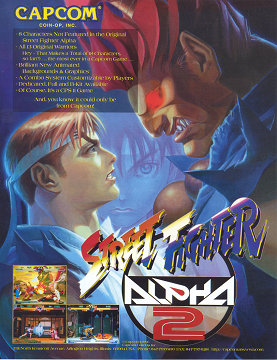
Street Fighter Alpha 2, known as Street Fighter Zero 2 in Japan, Asia, South America, and Oceania, is a 1996 fighting game originally released for the CPS II arcade hardware by Capcom. The game is a remake to the previous year's Street Fighter Alpha: Warriors' Dreams. The game features a number of improvements over the original, such as new attacks, stages, endings, and gameplay features. It was followed by Street Fighter Alpha 3.
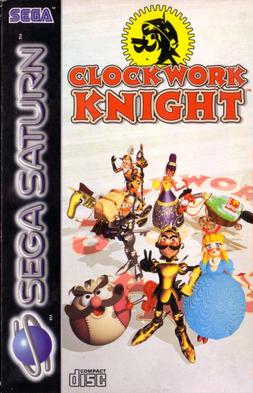
Clockwork Knight is a side-scrolling platform video game developed and published by Sega for the Sega Saturn. It was released in Japan on December 9, 1994, and as a launch title in North America and Europe, on May 11 and July 8, 1995, respectively. It was followed by Clockwork Knight 2.
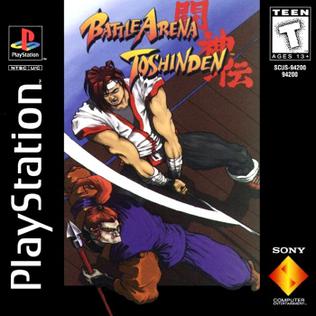
Battle Arena Toshinden is a fighting video game developed by Tamsoft and published by Takara for the PlayStation. Originally released in 1995, it was released internationally by Sony Computer Entertainment, followed by 1996 ports for the Sega Saturn, Game Boy and MS-DOS. It was one of the first fighting games, after Virtua Fighter in 1993 on arcade and console, to boast polygonal characters in a 3D environment, and features a sidestep maneuver which is credited for taking the genre into "true 3D."
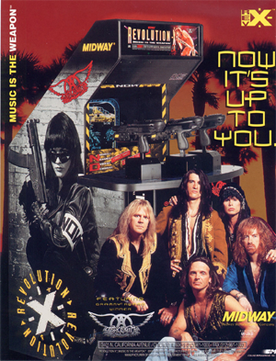
Revolution X is a shooting gallery video game developed by Midway and released in arcades in 1994. The gameplay is similar to Midway's earlier Terminator 2: Judgment Day, but is themed around the band Aerosmith. The oppressive New Order Nation regime and their leader Helga have abducted Aerosmith, and players use a mounted gun to control onscreen crosshairs and shoot enemies. The members of Aerosmith are hidden throughout the game's international locales and must be found in order to receive the game's true ending.

3D Lemmings is a 1995 puzzle video game developed by Clockwork Games and published by Psygnosis. The gameplay, like the original Lemmings game, requires the player to lead all the lemmings to their exit by giving them the appropriate "skills". It was the first Lemmings game to be rendered in 3D. It was released for DOS, PlayStation, and Sega Saturn.

Dragon Force is a real-time strategy and role-playing video game from Sega created for the Sega Saturn. It was created in Japan and translated for North American release by Working Designs in 1996, a translation that was also used by Sega in Europe under license from Working Designs. The game's main selling point was that battles involve up to 200 soldiers fighting on screen in real time, causing them to be often likened to the battle scenes in the then-recent film Braveheart.

Tetris Plus is a puzzle video game developed and by Jaleco for arcades in 1996, and ported to the Sega Saturn, PlayStation, and Game Boy later that year. The game would be followed by a sequel, Tetris Plus 2, in 1997. Ports were to be developed for the Atari Jaguar and Nintendo 64 but these were never released.

Guardian Heroes is a 2D side-scrolling beat 'em up video game in the vein of Final Fight or Golden Axe, but with RPG elements. The development team called it a "fighting RPG". Guardian Heroes was developed by Treasure and released in 1996 for the Sega Saturn video game console. A sequel was released in 2004 for the Game Boy Advance entitled Advance Guardian Heroes.
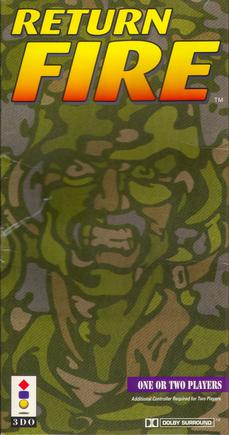
Return Fire is a 1995 video game developed by Silent Software, Inc. for the 3DO Interactive Multiplayer and ported to the PC and PlayStation in 1996. It was preceded by Fire Power (1987) and followed by Return Fire 2 (1998). An expansion pack, Return Fire: Maps O' Death, was released for the 3DO in 1995. Return Fire is a vehicular shooter from a 3D bird's eye view, in which the player's goal is to capture the enemy flag and return with it to their base. It was met with critical acclaim for its unusual gameplay concept, enjoyable multiplayer mode, and classical soundtrack, and is remembered as one of the 3DO's "best games" in its Home of the Underdogs entry.

The Legend of Oasis, released as The Story of Thor 2 in Europe and as Thor ~Seirei Ou Kiden~ in Japan, is a 1996 action role-playing game developed by Ancient and published by Sega for the Sega Saturn. It is the successor and prequel to the 1994 title Beyond Oasis for the Sega Mega Drive/Genesis. The player takes the role of Leon, who must find the six elemental spirits and use their powers to fight the evil wizard Agito and his legions of creatures.

WWF WrestleMania is a professional wrestling arcade game released by Midway Manufacturing Co. in 1995. It is based on the World Wrestling Federation (WWF) professional wrestling promotion.
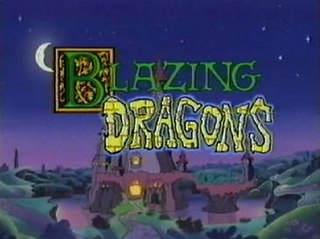
Blazing Dragons is an animated television series created by Terry Jones and Gavin Scott, and produced by Nelvana and Ellipse Animation. A coinciding graphic adventure video game was released for the original PlayStation and Sega Saturn in 1996 by Crystal Dynamics. The video game features the voice talents of several celebrities.

Panzer Dragoon II Zwei is a 1996 rail shooter game for the Sega Saturn, developed and published by Sega. The second entry in the Panzer Dragoon series and a prequel to the original game, the story follows Lundi and his dragon companion, Lagi, as they pursue an airship of the Ancient Age. The player controls an aiming reticle representing the dragon's laser and Lundi's gun, shooting enemies while the dragon travels through 3D environments on a fixed track. Levels can have multiple pathways, and the dragon grows stronger over the course of the game based on the player's score.

The Need for Speed is a 1994 racing game developed by EA Canada, originally known as Pioneer Productions, and published by Electronic Arts for 3DO in 1994. It allows driving eight licensed sports cars in three point-to-point tracks either with or without a computer opponent. Checkpoints, traffic vehicles, and police pursuits appear in the races.
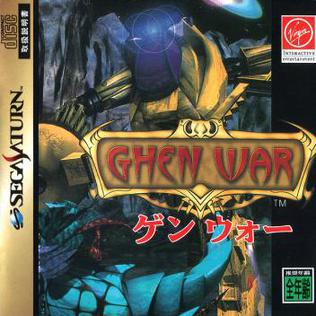
Ghen War is a first-person shooter video game for the Sega Saturn console. It was developed by American studio Jumpin' Jack Software and published by Sega in 1995. The game centers around a member of a mining crew, with an artificial powered exoskeleton resembling a power-loader. The crew, specifically the protagonist, must fight off a once-friendly alien race known as the Ghen, who suddenly turn on the humans.

Assault Rigs is a vehicular combat game developed and published by Psygnosis and released in 1996 for MS-DOS compatible operating systems and PlayStation. It was released a year later for the Sega Saturn in Japan. The game takes place in the future, where real sport has been overtaken in favour of virtual sport, the most popular of which is Assault Rigs, a tank simulator set inside a 3D virtual environment.

NFL Quarterback Club 96 is an American football video game released in December 1995. The game was released on the Sega Saturn, Sega Genesis, Game Boy, Sega Game Gear, DOS, and Super Nintendo Entertainment System. The game's cover features San Francisco 49ers quarterback Steve Young passing while being tackled by Chicago Bears defensive linemen Chris Zorich and Albert Fontenot. The Saturn, Genesis, SNES and DOS versions were developed by Iguana Entertainment, while the Game Boy and Game Gear edition was developed by Condor Inc.

Three Dirty Dwarves is a 1996 beat 'em up video game developed by Appaloosa Interactive and published by Sega for their Sega Saturn console. It was later ported to PC.




















